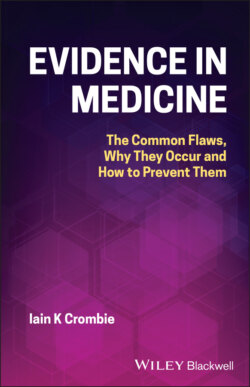Читать книгу Evidence in Medicine - Iain K. Crombie - Страница 13
RANDOM NUMBERS FOR TREATMENT ALLOCATION
ОглавлениеA landmark series of three trials, conducted under the auspices of the UK Medical Research Council, used random numbers to allocate patients to treatments. This methodological advance was proposed by the medical statistician Professor (later Sir) Austin Bradford Hill [40]. It was first used in a large field trial that assessed the effectiveness of a vaccine for whooping cough [41]. Although this study began in 1944, it was not published until 1951. The second trial, of streptomycin for pulmonary tuberculosis, became the most highly acclaimed study in the history of treatment evaluation. It began in 1946, but was the first to be published, in 1948 [42]. The third trial involved a large‐scale field trial of an antihistaminic drug (thonzylamine) for the prevention of the common cold [43].
As well as being published first, the streptomycin trial provided a major advance in the treatment of a feared disease, tuberculosis: it reduced the fatality rate at six months from 27% to 7% and also reduced the severity of disease among survivors. An editorial that accompanied the paper identified the advantage of individual randomisation over alternate allocation: it prevented a patient being included or rejected, based on whether the next treatment was to be antibiotic or control [44]. For example, if the doctor thought that the drug would not be effective in seriously ill patients, they might not be included in the study if they were scheduled to receive the active treatment. This would only need to happen a few times to bias the results of the study.
In addition to the use of random numbers to allocate patients to treatments, these three trials stand out for two other reasons. Patients were recruited from multiple centres to provide sufficient participants to be able to draw firm conclusions. The researchers also made considerable efforts to ensure that the participants, and the clinicians measuring the outcomes, were unaware of which treatment the patients received. This prevented bias in the reporting of symptoms by participants, and by those recording the outcomes: in modern terminology, it was double blind.
The landmark streptomycin trial in tuberculosis was followed by another study on pulmonary tuberculosis, published two years later [45]. It compared three treatments: streptomycin, another drug, para‐amino‐salicylic acid (PAS), and a combination of these two drugs. The same methodology was used as in the first streptomycin trial. The combination therapy had the best outcome, with streptomycin coming second. More importantly the combined treatment led to a much lower frequency of bacterial resistance to streptomycin. This study has been credited with leading to the maxim ‘never treat active tuberculosis with a single agent’, which is now the standard for managing this disease [46]. The clinical benefits apart, this set of four rigorous studies supported by the Medical Research Council inaugurated the era of high quality clinical trials.
